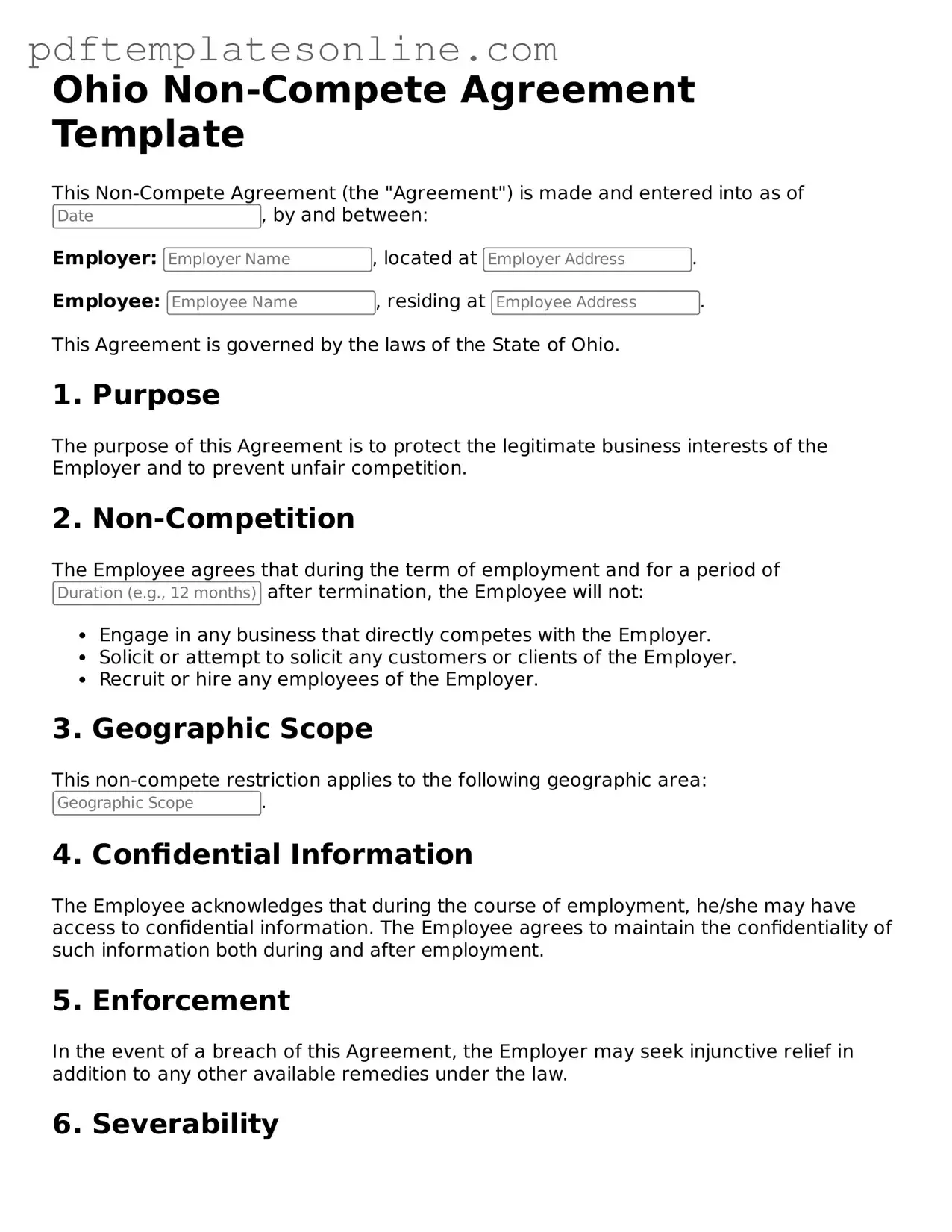Filling out the Ohio Non-compete Agreement form can be a straightforward process, but many individuals make common mistakes that can lead to complications down the line. One of the most frequent errors is failing to clearly define the scope of the non-compete. Without specific details regarding the activities that are restricted, the agreement may be deemed unenforceable. It’s essential to outline exactly what kind of work or business activities are prohibited after leaving the company.
Another common mistake is neglecting to specify the geographic area covered by the agreement. If the area is too broad, it may be challenged in court. Conversely, if it is too narrow, it may not adequately protect the employer's interests. Finding the right balance is crucial to ensure the agreement is fair and enforceable.
Many individuals also overlook the duration of the non-compete clause. A common error is setting a time frame that is either too short or excessively long. Courts often scrutinize the reasonableness of the duration. A well-thought-out time limit that reflects industry standards can help avoid disputes later.
Another mistake is not considering the consideration provided in exchange for signing the agreement. For a non-compete to be enforceable, there must be something of value exchanged, such as a job offer or a promotion. Failing to acknowledge this can weaken the agreement's legitimacy.
Some people mistakenly believe that a verbal agreement suffices. It’s important to remember that non-compete agreements should always be in writing. Relying on verbal promises can lead to misunderstandings and disputes, making it essential to have a signed document that both parties can refer to.
Additionally, individuals often ignore the importance of reviewing the agreement with legal counsel. Many assume they can fill out the form without professional guidance. However, a contract specialist can provide valuable insights and help identify potential issues that could arise from the language used in the agreement.
Lastly, people frequently forget to keep a copy of the signed agreement for their records. Having a personal copy is vital for future reference. It ensures that all parties are aware of their obligations and can help prevent any potential conflicts regarding the terms of the non-compete.
